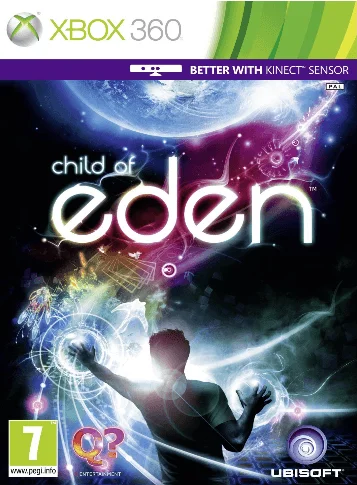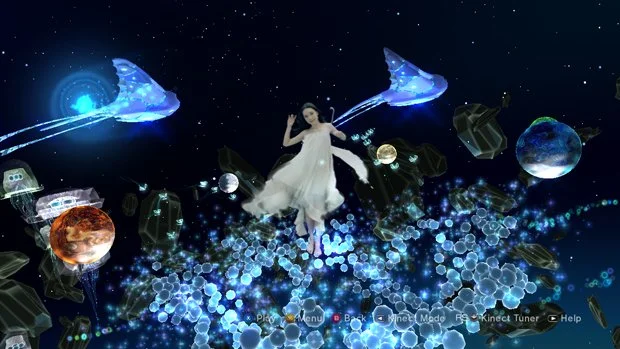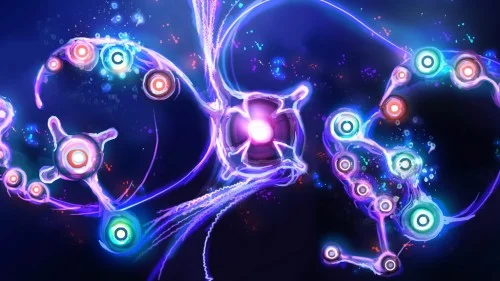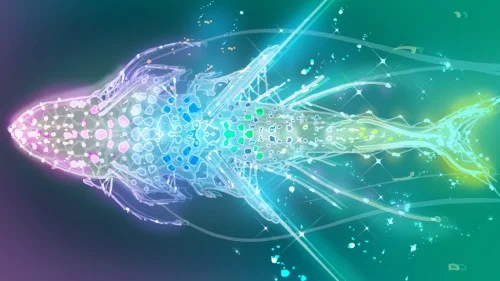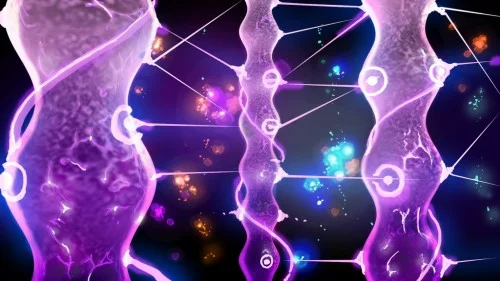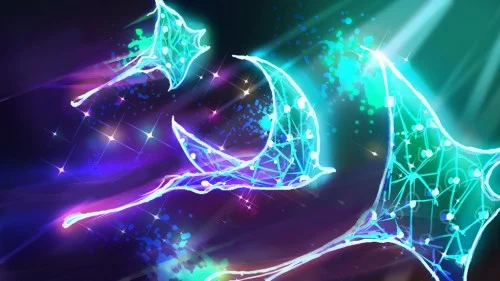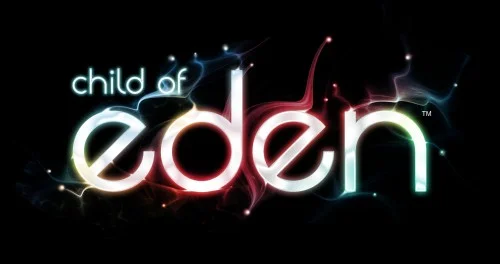Child of Eden
Developer: Q Entertainment
Publisher: Ubisoft
Platform: Xbox 360/Kinect compatible (Reviewed), Playstion 3/Playstation Move compatible
Release Date: June 14, 2011
Price: $39.99 (Available HERE)
Premise:
When was the last time you decided to turn on your motion control device for your respective console? In the past, motion controls revolutionised the concepts of gameplay and interaction by adding physically controlled elements into the games we would play. It was a technology that changed the industry in the past five odd years. However, many motion control functions have been met with disdain by the hardcore gaming demographics. True enough that motion control technologies such as the PS Move, the Kinect and the Wii motion sensors have been undermined by the overly extensive range of ‘casual’ games released over this time period.
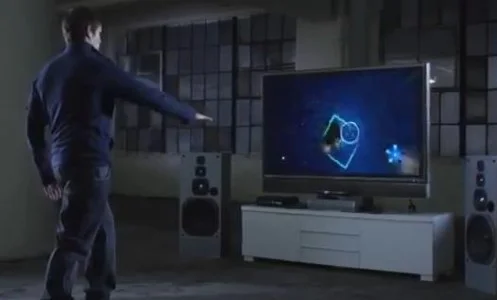
So what if game developers decided that it was time for a change back? To release a quality set of games that target the hardcore gamer demographic that built the foundations of the modern industry? In what is being hailed as one of the most anticipated games of the year, ‘Child of Eden’ is the newest release title to come from the creative mind of Tetsuya Mizuguchi, the same game designer behind the highly acclaimed titles ‘Lumines’ and ‘Rez’. Using the current generation of consoles’ technology to augment the visual design of the game, ‘Child of Eden’ attempts to deliver a breath taking experience that appeals to the senses of sight, sound and, through motion technology, even touch. All of this is centred around a Rail-Shooter genre of gameplay. The question is, can this entice hardcore gamers to start using their motion control device again?
Story/Campaign:
The story of Child of Eden is introduced in the opening cinematics of the game. So, guess what folks? It’s the FUTURE. Again. But unlike the many video game archetypes we have played through over the years, mankind is not under threat from mass extinction, natural disasters, alien hordes or any of the things we’ve come to expect from the shooter genre in general. The only thing mankind is at threat of losing just happens to be the INTERNET of all things.
We are told that in the year 2019, the first human child is born in outer space, on board the international space station. Named Lumi, this young girl dreamed of experiencing the natural beauty of planet Earth for herself, but it was unattainable in space. She expressed her emotions through song, which was projected down to the people of Earth. Just before her passing, mankind had developed the means in which memories and feelings can be recorded. Her memories were chosen to be recorded and archived. Since that time, mankind has thrived in an era of space exploration. The collective knowledge of the human race is now stored in an archive accessible anywhere in space. This new Internet system comes to be known as ‘Eden’. Jump forward a few hundred years. In the 23rd century, scientists attempt to re-create Lumi within the Eden archive itself.
This cuts to a surprising cinematic which combines CG graphics with an actual live-action persona. We see a young girl garbed in white awaken in a digital garden. Players can pretty safely assume that the girl is the newly created Lumi, and the garden represents Eden. Having an actual actress perform in cinematics is a nice touch which I feel helps individualise the game from others in the game genre. As she begins to explore and interact with the world around her, she is clearly overcome with a sense of joy and curiosity. However, when she discovers that Eden is not in fact the real Earth, like the original Lumi desired to see, we see a deep state of depression wash over her. At the same time, we see that the garden around her begins to crumble and succumb to some kind of corruption. Whether this is because of Lumi’s distress, or whether this is some form foreign corruption to Eden itself is up to the player’s own sense of speculation. I favour the former theory, but that’s neither here nor there.
The cinematic is ended with a simple message. “Save Eden. Save Lumi.” Simple but powerful words.
The storyline of ‘Child of Eden’ is set apart pretty distinctly from the gameplay elements. The plot essentially revolves around a concept of purification. The players are set apart pretty independently from the story and universe, as they have no player avatar with whom they can interact. Essentially the purpose of the game is to purify the corruption that has spread because of Lumi, or in spite of her. As players progress through successive stages of the game, we see Lumi’s crop up at certain points singing or dancing as the players go about fixing the Eden’s corruption. Besides the afore mentioned cinematic elements, the game features little story beyond that. Personally I feel the level of story delivered is appropriate for the genre, providing just enough to give players a sense of what they are doing in this digital world. As an On-Rails shooter, a copious amount of story does not affect core gameplay unless there is too much of it. Limiting Lumi’s appearances and the theory behind this evolving concept of the internet works effectively in leaving the building of the rest of the universe up to the imagination of the player.
Gameplay:
I had the chance to play through the Xbox 360 port of Child of Eden. It must be noted immediately that the game IS playable either with or without the Kinect motion system. However, having played with both motion control and handheld controller, it must be said that the gameplay feels more fluid and natural when the player makes use of the motion controls. It provides a stronger sense of interaction with the digital world in that the player’s own movements are helping shape and change the universe surrounding. The game is still completely playable with the controller, but if one were to pick up this game without making use of the Kinect, then they would only be doing themselves a disservice.
Of course when mentioning motion controls, the controls themselves have to be responsive to player commands. Otherwise gameplay descends into the “waggle-fest” that has characterised so many Wii titles. Thankfully, the game’s motion controls are highly, and surprisingly accurately responsive to player input. This may be due to the fact that the only elements of the body the Kinect needs to sense are the player’s hands. Just as a Kinect user would interface with the Xbox Kinect menu , so to do the player interact with the in-game menus. The same mechanic is used to aim and scroll around the world of Eden when players are dropped into the action.
As previously mentioned the game fits into the genre of an On-the-rails shooter. Player have no choice in regards to where they move about Eden, but rather interact with objects and enemies along a preset route. It must be said that the game feels confined in this regard, however I feel this issue is something of a two sided coin. On the one hand, players have very restricted controls in terms of interaction, but on the other, the world of Eden is strange and confusing in nature. Attempting to traverse this strange digital landscape would be nearly impossible, as physics and dimensions seem non-existent in digital space. The plane is constantly shaping and twisting in reaction or movements, colours and sounds. Restricting movement to a preset path may limit the players interaction, but not at the cost of immersion (which is better achieved with motion control use.)
The aim of each level is the same: purify as much of Eden as possible whilst maintaining your own health. The purification process occurs by defeating enemies by use of either the lock-on shot, or the Tracer. These are the only 2 weapons present, besides the Euphoria “Bomb”. For a majority of the game, players will find themselves using the lock-on shot, controlled by the use of the player’s right hand in Kinect mode. This is a basic target-then-fire mechanic. Player points can be maximised by targeting up to 8 enemies at once. Players will need to switch weapons to the Tracer to defeat specifically corrupted purple enemies, and to shoot down enemy projectiles. The switch is an easy transition from use of the right hand, to that of the left. The Tracer can also be used to defeat stock enemies, but it does not allow players to string together combos for points. When enemies are defeated, they sometimes drop health and Euphoria bombs to help players out of a bind. The gameplay start simple, but gets more intense the further the player proceeds into the successive stages. The game itself is actually quite simple to play, but the difficultly curve really jumps ahead during the mid sections of the game. However, the raw FUN factor is still there.
When it comes to gameplay elements, I really have no complaints beyond one thing: longevity. A great game will often compel players to come back and play through it again. Since Child of Eden is not the sort of game one would direct at the casual game market, the hardcore players would expect to get a decent level of length of out their titles. This can be achieved either through an extensive campaign, or through use of a multiplayer function. Unfortunately, Child of Eden skips on both. No multiplayer is included within the game (which can be taken as a blessing by some), however, the limitations of the levels available really hinders the game’s replay value. This may be rectified with the possibility of DLC updates in the future, but as the game stands, the only replay value to really be had is in obtaining achievements, or posting scores on leaderboards. Neither is really core to the gameplay, so many players will likely overlook these as replay incentives. Aesthetically however, if players want to feel a unique sense of escape, then by all means, Child f Eden is a decent enough venture from reality. However, for a game that tries to bring hardcore players back to motion controls, I feel that potential has been hampered by the game’s unfortunately short length.
Visual/Audio:
Visually, the game certainly stands out from other games of a similar genre. When most people think of games in the Rail Shooter genre, they tend to liken them to titles such as House of the Dead, Star fox and even arcade machine titles like Time Crisis. A previous game, also developed by Tetsuya Mizuguchi, REZ on the SEGA Dreamcast featured a very similar style of combining a Rail shooter game with a digital graphic extravaganza. Rather than using realistic human environments and recognisable features, the game deviates from the norm in creating a rail shooter experience that feels different. It lacks the violence level we come to associate with shooter type games, but it is still a heck of a lot of fun to play.
I will say this right now, Child of Eden is a very aesthetically pleasing game. The visuals and vision of Eden are unique. The bright colour schemes accompanied by dark backgrounds provide a sense of wonder and beauty, but at the same time a feel of entrapment and restriction. It really stands out to the player that this is meant to be a beautiful place, but it has been corrupted. The visuals themselves borrow very strongly from naturally inspiration. The environments that the player will experience can vary from a wide variety of places, but all have a very similar techno feel to it. One stage feels like being in outer space and entering the Earth. Others are presented as a digital ocean, or a digital forest. The design of objects and enemies in the world are very similar in their natural inspirational roots too. Many players will often run across the jellyfish-like and bird-like enemies. Even the final bosses look pretty, which makes it a real shame when you have to destroy them to purify them. Bosses can include creatures of legend, like a phoenix, and real creatures which are known for their relative “beauty”, such as a digital whale.
On a side note, I find it a little humorous how Eden is presented to the audience. It is shown off to be a natural garden full of beauty, knowledge and wonder. But then, let’s remember that this is the INTERNET we’re talking about people. The same human internet we have now. And we’ve been told it’s been corrupted. I’m surprised it wasn’t already. :\ And knowing some of the stuff that’s out there, it really doesn’t seem like a place you’d associate with a wonderful natural garden. Let’s just say if people on Facebook try to “friend” Lumi, then that would be the least of our worries.
In terms of the sounds presented, the music compliments the visuals very well. The techno beat combined with the digital life visuals provide a strong impression of artificiality. This highlights to the player that this universe is not in fact part of reality, but it doesn’t mean that it can’t hold its own definition of beauty. The singing that compliments it is performed by a female VA, which is heavily implicit of Lumi’s own songs which are foreshadowed in the games’ opening sequences. As far as sound effects go, Child of Eden makes distinct actions clear by complimenting player actions with appropriate sounds. It should however be noted that the enemy defeating sound effects leave a little to be desired. Defeating enemies over and over again to the same visual and audio effect can get a little droll. But overall, the experience is a worthwhile, and unique one.
Conclusions:
As a hardcore gamer, I tend to be wary and often overly critical of games that utilise motion controls simply as a gimmick to market the titles to the casual demographic. Ever since games and the “gamer” image became more socially marketable, many hardcore players carry a lot more resentment for motion control technology than they’d like to admit. I myself was somewhat dubious when I first heard that a rail-shooter was coming to the Kinect system. However, what has been presented as a first entry into the genre for the Kinect has pleasantly surprised me. It should be said that this game will not appeal to everyone. Gamers stuck in the competitive multiplayer “COD” mentality probably won’t get too much of a kick out of this, but there are plenty of gamers out there who like to mix it up. If so, then this one is worth the time. It could have gone for longer, but what has been presented to us is a solid entry into the motion control market.
Xbox360 Players who are currently disappointed with their Kinect so far should go out and give this one a try. Who knows, it might change your mind. Child of Eden is also scheduled for a September release on the PS3 that will also feature PSMove compatibility.
If you want a gameplay experience that is really, truly unique, then Child of Eden is most certainly a game for you.



